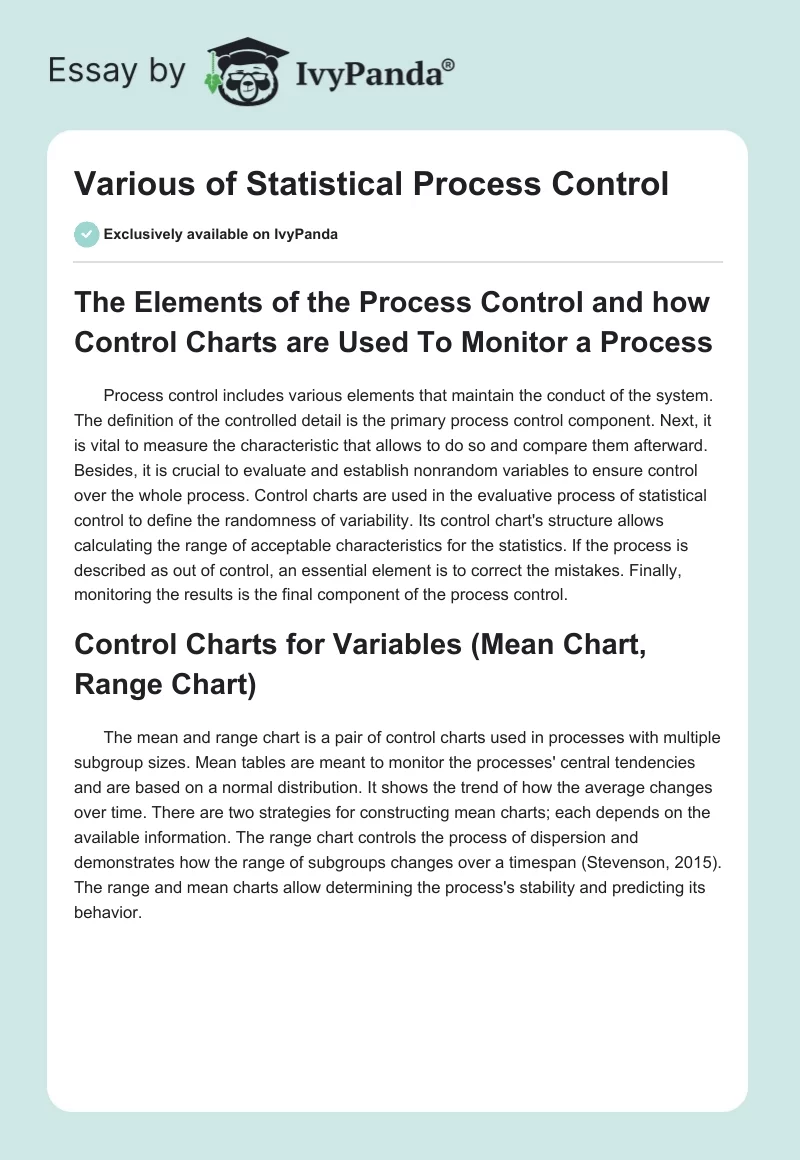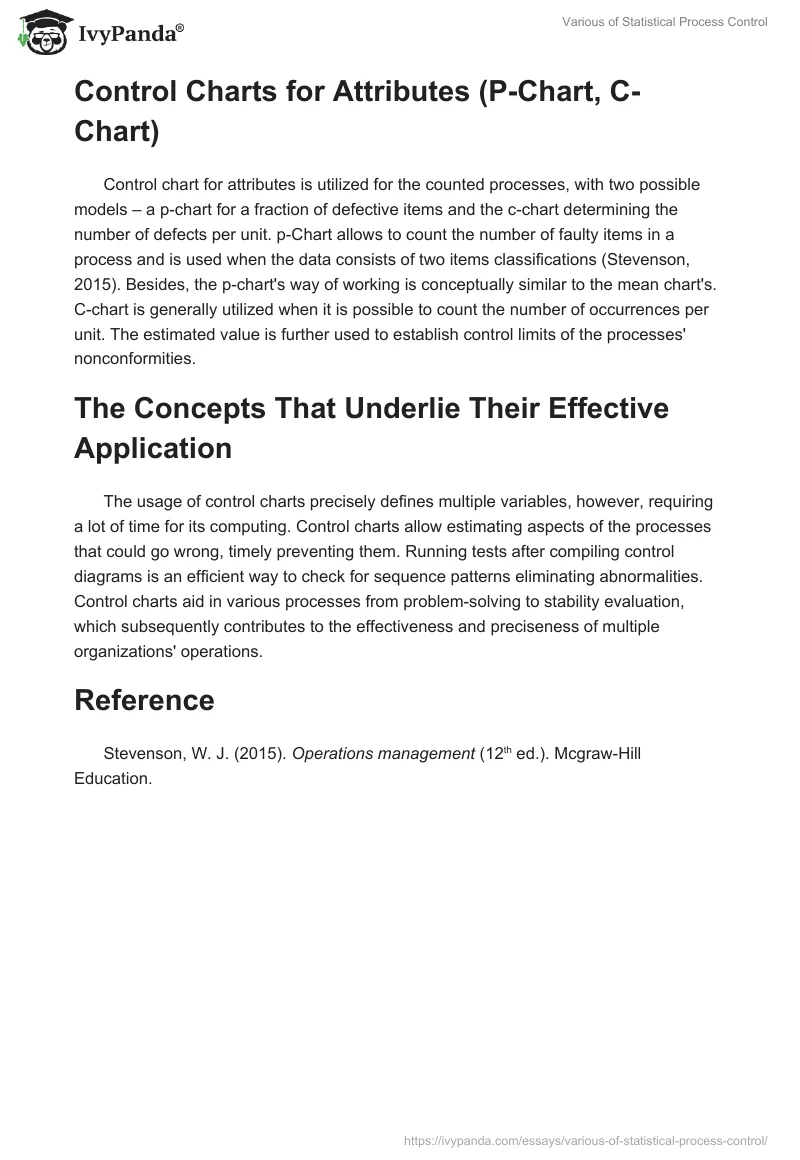The Elements of the Process Control and how Control Charts are Used To Monitor a Process
Process control includes various elements that maintain the conduct of the system. The definition of the controlled detail is the primary process control component. Next, it is vital to measure the characteristic that allows to do so and compare them afterward. Besides, it is crucial to evaluate and establish nonrandom variables to ensure control over the whole process. Control charts are used in the evaluative process of statistical control to define the randomness of variability. Its control chart’s structure allows calculating the range of acceptable characteristics for the statistics. If the process is described as out of control, an essential element is to correct the mistakes. Finally, monitoring the results is the final component of the process control.
Control Charts for Variables (Mean Chart, Range Chart)
The mean and range chart is a pair of control charts used in processes with multiple subgroup sizes. Mean tables are meant to monitor the processes’ central tendencies and are based on a normal distribution. It shows the trend of how the average changes over time. There are two strategies for constructing mean charts; each depends on the available information. The range chart controls the process of dispersion and demonstrates how the range of subgroups changes over a timespan (Stevenson, 2015). The range and mean charts allow determining the process’s stability and predicting its behavior.
Control Charts for Attributes (P-Chart, C-Chart)
Control chart for attributes is utilized for the counted processes, with two possible models – a p-chart for a fraction of defective items and the c-chart determining the number of defects per unit. p-Chart allows to count the number of faulty items in a process and is used when the data consists of two items classifications (Stevenson, 2015). Besides, the p-chart’s way of working is conceptually similar to the mean chart’s. C-chart is generally utilized when it is possible to count the number of occurrences per unit. The estimated value is further used to establish control limits of the processes’ nonconformities.
The Concepts That Underlie Their Effective Application
The usage of control charts precisely defines multiple variables, however, requiring a lot of time for its computing. Control charts allow estimating aspects of the processes that could go wrong, timely preventing them. Running tests after compiling control diagrams is an efficient way to check for sequence patterns eliminating abnormalities. Control charts aid in various processes from problem-solving to stability evaluation, which subsequently contributes to the effectiveness and preciseness of multiple organizations’ operations.
Reference
Stevenson, W. J. (2015). Operations management (12th ed.). Mcgraw-Hill Education.


